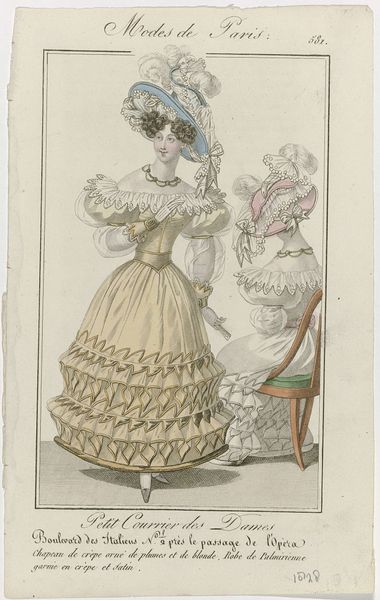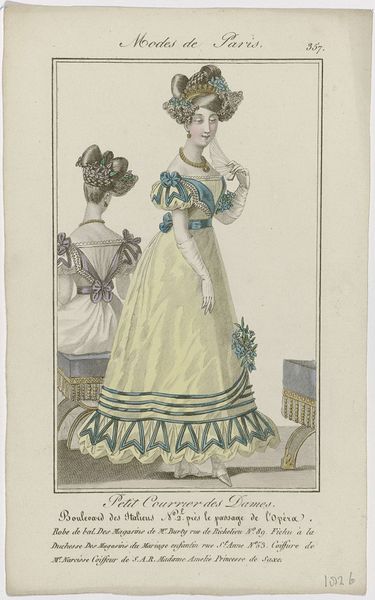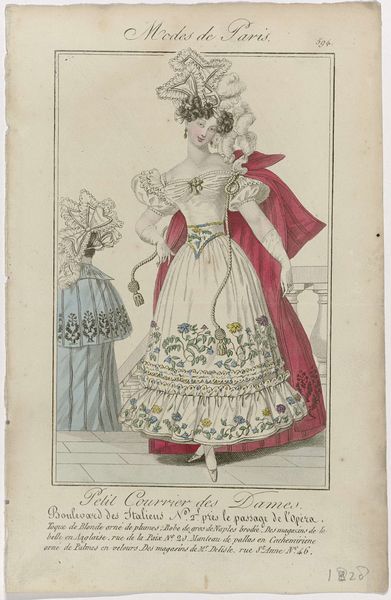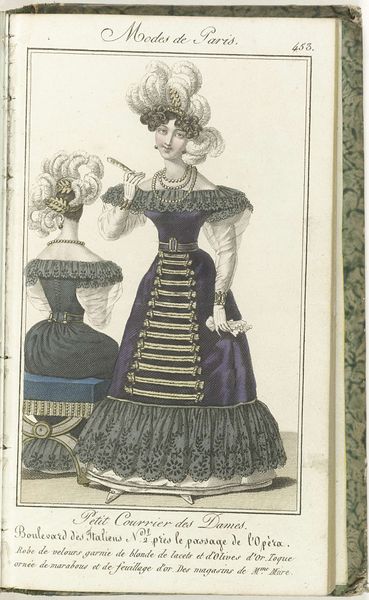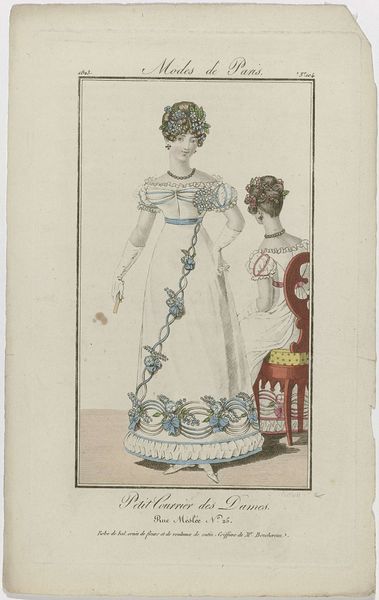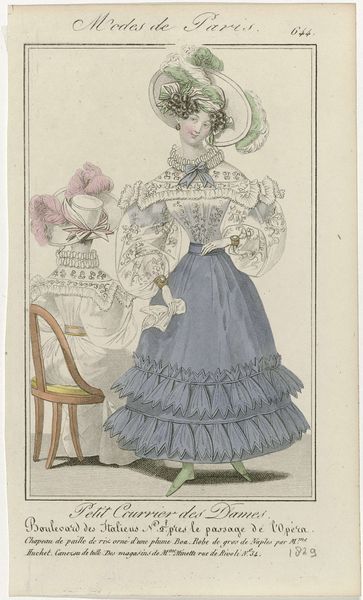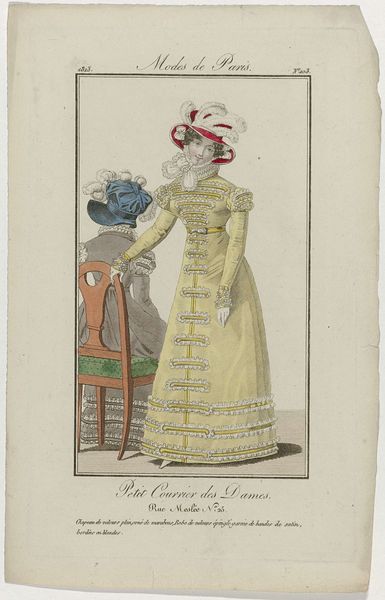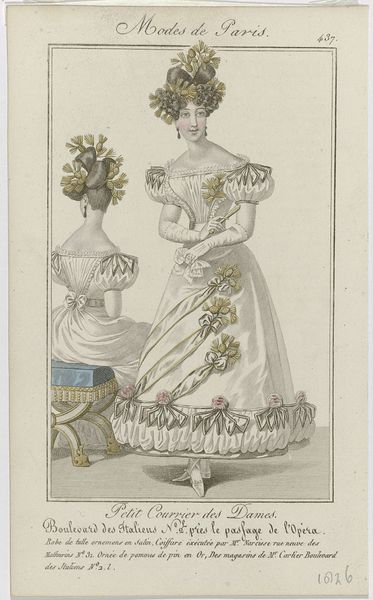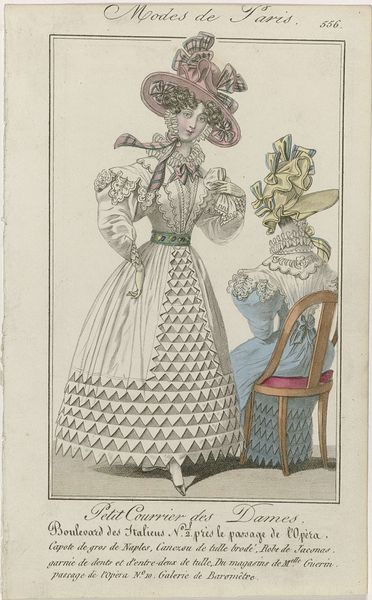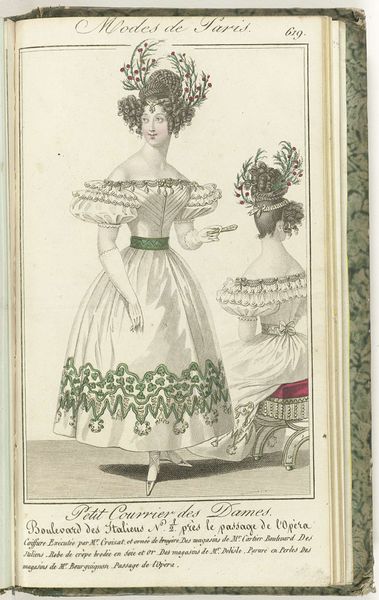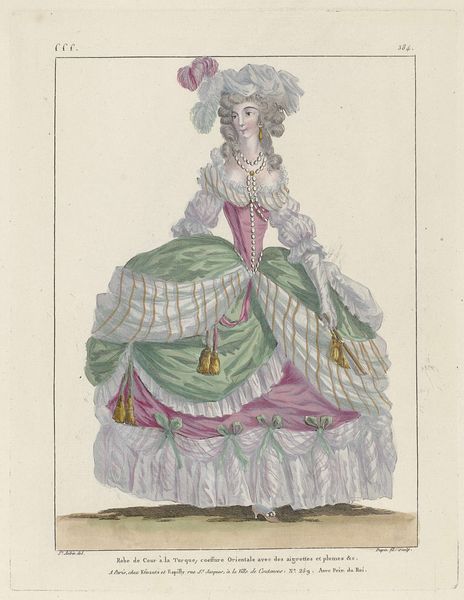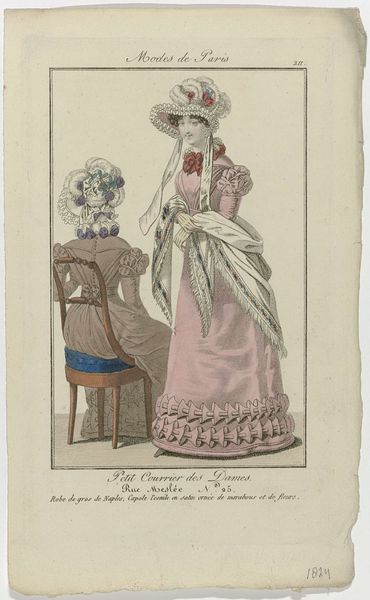
painting, print, watercolor
#
portrait
#
painting
# print
#
figuration
#
watercolor
#
historical fashion
#
romanticism
#
watercolour illustration
#
watercolor
Dimensions: height 196 mm, width 119 mm
Copyright: Rijks Museum: Open Domain
Editor: Here we have an image entitled "Petit Courrier des Dames," number 133, created in 1823. It appears to be a watercolor print showcasing women's fashion. It feels quite opulent, almost excessively so, focusing heavily on the details of the dress fabric and lace. What stands out to you about this piece? Curator: This print provides fascinating insights into the material culture of the early 19th century. Beyond the aesthetic, consider the production. These detailed fashion plates weren't mass-produced in the modern sense. Think about the specialized labor involved - the paper-making, the textile production, the engraving and printing process, the hand-coloring... Each stage implicates a network of workshops, skilled artisans, and the social hierarchies that governed their access to resources. How does viewing it through this lens change your understanding? Editor: It definitely shifts my perspective. I hadn't really considered the sheer number of people involved in even creating something like this, that's intended as a kind of ephemeral promotional material. I guess I thought of it as more individual work. Curator: Precisely. And consider the audience for whom these images were made: affluent women with the purchasing power to acquire these luxury goods and a leisure class position to occupy such a time-intensive pursuit of personal display. What are the implications of consumption for that social strata in France in the 1820s? It reinforces their status, differentiates them from the working classes, and perpetuates a system of economic disparity. Editor: That’s really interesting! So it’s not just a pretty picture, but also an advertisement reflecting specific labor practices, consumer habits and a reinforcement of existing social structures. Curator: Exactly. By analyzing the materials, the means of production, and the social context surrounding its consumption, we gain a deeper understanding of the power dynamics embedded within seemingly frivolous fashion plates. Editor: Thanks, I'll never look at fashion plates the same way again. I see how much they can tell us!
Comments
No comments
Be the first to comment and join the conversation on the ultimate creative platform.
